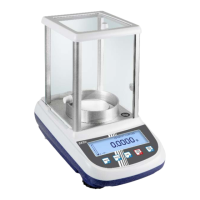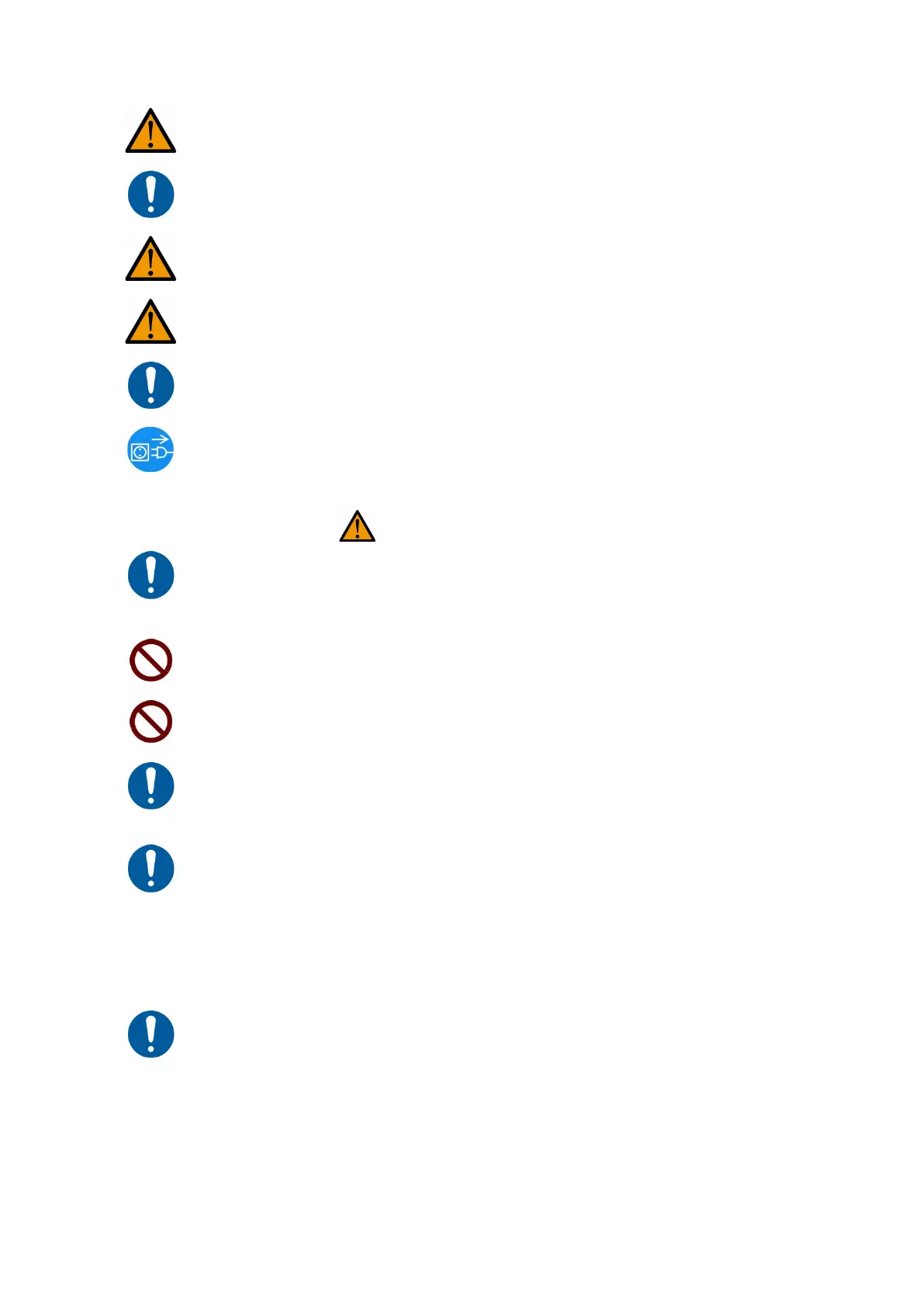98 TALJG_A/TALSG_A/TPLJG_A/TPLSG_A-BA-e-2112
Protect from any
damage resulting from any fall, vibrations or impacts,
see the label to the left.
Always use the original power supply. The printed voltage value must be
consistent with the local mains voltage.
Injury hazard, the ion source blades are very sharp.
The ionizing unit generates toxic ozone, ensure appropriate ventilation.
Before you start any maintenance and cleaning, disconnect the ionizing
unit from the mains.
Disconnect the unused ionizing unit from the mains.
CAUTION
Ensure periodic maintenance and cleaning of the ionizing unit.
Ion source cleaning: after 1,000 hours.
Ion source replacement: After 30,000 hours
Starting a damaged ionizing unit may result in a short circuit, fire or
electric shock.
It is prohibited to start it
outdoors and in vehicles. It invalidates all
warranties.
If there are any electromagnetic fields, high readout deviations
(erroneous weighing results) may occur. Discharge the sample at a
relevant distance from the scale.
In the standard mode, the
green LED [POWER] is lit, if the operation is
disturbed, the red LED [ALARM] is lit.
When the red LED is lit, switch the ionizing unit off immediately using the
main switch and then on again. If the red LED is still lit, contact the
manufacturer.
During ionizing, the blue LED [RUN] is lit.
Operation sounds can be heard during the ionizing process.

